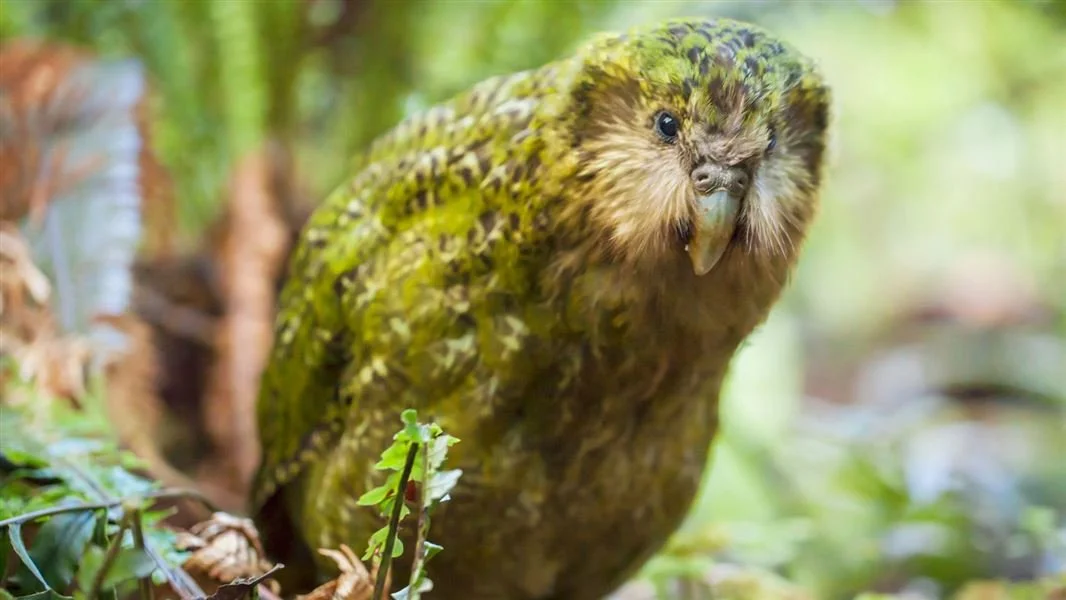More kākāpō deaths threaten critically endangered species
Tāmaki Makaurau - The number of kākāpō alive has officially fallen to 249 individuals, according the national kākāpō recovery team.
The world’s fattest parrot and one of the most critically endangered birds on the planet, is a nocturnal, flightless parrot. And its strangeness doesn't end there. It's critically endangered and one of New Zealand’s unique treasures.
Sadly, Doc, a 20 year old male, was found dead on Hauturu-O-Toi / Little Barrier Island. Manu, a 25 year-old male, has also been found dead on Anchor. In both cases, the cause of death is unconfirmed at this stage.
Punga, a female hatched in 2016, has also been removed from the official population and is presumed dead after being missing on Anchor Island for over five years.
The flightless kākāpō are heavily protected on five predator-free islands arounda Aotearoa. While looking for clues that could inform conservation efforts and prevent their numbers from dwindling further, researchers set out to map the kākāpō ’s microbiome using faecal samples.
What they have found was highly unusual, the gut microbiome of the kākāpō is very low in diversity and made up almost entirely of the bacteria Escherichia coli.
Further, more biodiverse and natural ecosystems hold a greater proportion of beneficial microbes. So, as humans infringe on the habitats of wild animals, they alter their gut microbiomes as well.
Kākāpō Recovery leads kākāpō conservation efforts today. They face major challenges due to kākāpō infertility and inbreeding. Nevertheless, they've had some triumphant successes using innovative techniques to grow the population.
Before humans arrived, kākāpō were abundant throughout New Zealand. Population numbers dropped swiftly due to hunting, introduced predators and land clearance. Conservation efforts began in 1894, but by the mid-1900s, kākāpō teetered on the edge of extinction.
The kākāpō is a large, heavy parrot with a distinctive owl-like face and a waddling gait. They cannot fly, but they climb well. They are perhaps the longest-lived bird species in the world, estimated to reach 90 years.















Lisa was born in Auckland at the start of the 1970s, living in a small campsite community on the North Shore called Browns Bay. She spent a significant part of her life with her grandparents, often hanging out at the beaches. Lisa has many happy memories from those days at Browns Bay beach, where fish were plentiful on the point and the ocean was rich in seaweed. She played in the water for hours, going home totally “sun-kissed.” “An adorable time to grow up,” Lisa tells me.
Lisa enjoyed many sports; she was a keen tennis player and netballer, playing in the top teams for her age right up until the family moved to Wellington. Lisa was fifteen years old, which unfortunately marked the end of her sporting career. Local teams were well established in Wellington, and her attention was drawn elsewhere.